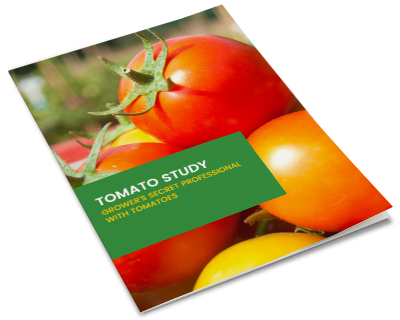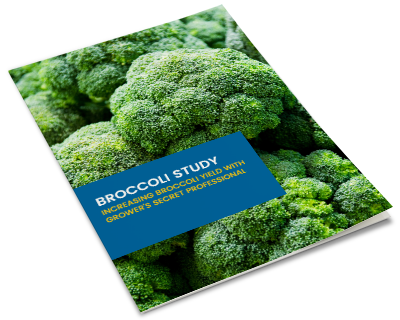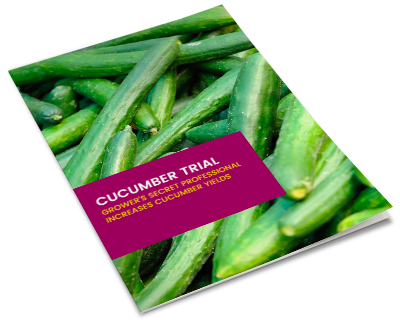|
Posted By: Wesley Chun, Ph.D. / |

Introduction
The element calcium (Ca) is the fifth most abundant element in the earth’s crust and the third most abundant metal after iron and aluminum. It is a Group 2 member of the Periodic table. Calcium along with magnesium, beryllium, strontium, radium, and barium, are known as alkaline earth metals. These metals react with other chemicals at standard temperature and pressure, usually with an overall release of energy. In plants calcium is an essential secondary macronutrient, needed in moderate amounts and is rarely limiting in crop production.
Calcium is a multifunctional nutrient in the physiology of crop plants. It is important in cell walls and membranes, nutrient uptake and transport, host plant defenses, protection against metal toxicities, and plant growth. It can also influence the availability and uptake of other nutrients such as urea containing fertilizers.
Calcium in Plants
If you grow apples, broccoli, brussels sprouts, cabbage, carrots, cauliflower, celery, cherries, citrus, conifers, cotton, cucurbits, grapes, legumes, lettuce, melons, peaches, peanuts, pears, peppers, potatoes, tobacco, and tomatoes, pay attention to Ca.
Calcium is a fixed or non-mobile macronutrient in plants. Once incorporated into an organic molecule, it cannot be mobilized to meet nutritional requirements in other parts of the plant. In natural habitats, Ca concentrations range between 0.1 and 5% of the dry weight of the plant. It is acquired from soil through root uptake and translocated via xylem in plants. In general, Ca is needed in moderate amounts by plants. Ca removal for crops range from one pound per acre for barley and wheat (40 bu/a yield), to 112 pounds per acre for alfalfa (4 ton/a yield). Additional examples of Ca removal by vegetable crops are shown in Table 1.
Table 1. Estimated calcium by a few vegetable crops.1
| Vegetable | Assumed yields per acre | Pounds of Ca removed |
|
Snap beans |
250 bu |
7 |
|
Cabbage |
20 tons |
28 |
|
Cauliflower |
6 tons |
4 |
|
Kale |
10 tons |
50 |
|
Lettuce |
15 tons |
13 |
|
Onions |
20 tons |
17 |
|
Spinach |
10 tons |
24 |
|
Tomatoes |
30 tons |
15 |
1 Please note that these are assumed yields and estimated calcium removed are approximate. Actual yields and calcium removed will vary due to local weather, and crop management practices.
Calcium is deposited in cell walls and membranes. In cell walls, Ca plays an important role in the crosslinking of acidic pectin residues. The amount of crosslinking in cell walls regulates growth. Higher Ca levels have greater crosslinking and cell walls become more rigid and less plastic. This results in an inhibition of shoot and coleoptile growth. However, higher crosslinking of cell walls improves resistance to pathogen attack. Lower levels of Ca results in less rigid cell walls and promotes cell and tissue elongation.
Calcium also binds to the phospholipids in cell membranes and enhances membrane stability and structural integrity. When Ca is deficient, permeability of the plasma membrane increases. In this sense, Ca functions as a regulator of membrane permeability. Low Ca promotes leakage of cellular ions and metabolites. In the presence of sodium, high calcium levels promotes uptake, and low calcium promotes release of potassium. Cations such as K, Mg, Na, NH4+ can directly and indirectly depress Ca uptake and distribution in the plant.
Calcium also exists at nanomolar levels in the cytosol and storage organs of cells where they play regulatory roles in abiotic and biotic stress tolerance.
Calcium in Soils
Calcium is commonly found on earth as calcium carbonate in limestone, fossilised remnants of early sea life, gypsum, anhydrite, fluorite, and apatite. Total amount of Ca in non-calcareous, temperate soils range from 0.1 to 1.5%, highly weathered soils 0.1 to 0.3%, and calcareous soils up to 25% dry weight.
Fertilizing with Calcium
Calcium is not traditionally added to soil or formulated specifically as a fertilizer to meet Ca requirements of a crop. It is typically added as a consequence of liming to increase soil pH, as a soil amendment to improve soil structure, or as an in season supplement to address a nutrient deficiency. Common calcium fertilizers include bone meal, calcium chloride [(CaCl2)], calcium nitrate [Ca(NO3)2], calcium thiosulfate [CaS2O3], EDTA or amino acid chelated calcium, ground oyster shells, gypsum [(CaSO4.2H2O], limestone [CaCO3], and triple superphosphate [(Ca(H2PO4)2.H2O]. Calcium is normally applied directly to the soil for most crops. Foliar application of soluble Ca fertilizers are usually made to correct deficiencies and to improve crop quality during the growing season.
Applying soluble calcium with an ammonium form of nitrogen can improve crop production. Calcium increases ammonium, potassium, and phosphorus absorption, and stimulates photosynthesis. Thus, calcium increases nitrogen use efficiency which can contribute to reducing nitrogen contamination of the environment.
Deficiency Symptoms
Calcium deficiencies are rare in nature but can occur with soils with low base saturation and/or high levels of acid deposition. Ca deficiency symptoms occur in plants grown in low pH soils, less than pH 5 on mineral soils, and less than pH 4.8 for organic soils. Low soil Ca can occur in non-limed, highly weathered acid soils or soils with very high levels of magnesium and potassium. High phosphorus soils can also create Ca deficient soils through the formation of insoluble calcium phosphates.
Classical symptoms indicating a calcium deficiency are, death of growing points, abnormally dark green foliage, poor fruit storage, premature shedding of blossoms and buds, slowing of growth, stunting, and weakened stems. Symptoms develop because calcium cannot be mobilized from older tissues through the phloem to support new growth and depends on on xylem transpiration and translocation of Ca.
Since xylem transpiration is low in young leaves, enclosed tissues, and fruit, Ca deficiencies commonly occur in those tissues. Young expanding leaves of leafy vegetable may have tipburn symptoms. Brown heart of leafy vegetables (cabbage, brussel sprouts) and blackheart of celery are symptoms that are observed when young tissues are enclosed. In corn, plants may be stunted and leaf tips stick to the next lower leaf creating a ladderlike appearance. When tissues are primarily fed by the phloem rather than the xylem, symptoms such as blossom end rot (pepper, tomato, watermelon), empty pod of peanut, and bitter pit of apples will occur. Insufficient calcium can cause cavity spot and stunting of growth in carrots. Other symptoms of a Ca deficiency are physiological disorders like cracking in tomato, cherry, and apple fruit on exposure to hypo-osmotic shock caused from increased humidity or rainfall.
Crop Responses to Calcium
As described earlier in this article, calcium plays major roles in plant growth and development due to its function in cell wall and cell membrane structure. In addition, cytosolic or free Ca in the plant functions as an intracellular secondary messenger for physical and biotic stress. Exogenously applied Ca increases net photosynthesis by improving transpiration, increasing stomatal conductance, and reduced reactive oxygen species in plants that were negatively affected by acid rain or heat stressed. Studies have shown Ca increases the production of heat shock proteins when plants are stressed. These are proteins that all living organisms produce when exposed to heat and other types of stress. These proteins “protect” unfolded proteins caused by the stress until the organism’s cellular repair systems restores the damage. Calcium plays a similar role in resistance to freezing stress. Lastly, calcium plays two roles in mediating attack from pathogens. Reduced disease due to Erwinia carotovora in vegetables and potato tubers, and Fusarium oxysporum wilt and crown rot in tomatoes has been attributed to calcium’s role in cell and cell wall structure, and its role in plant defense-signalling pathways.
Toxicity Symptoms
Toxicity symptoms from excessive calcium availability is not commonly observed. Excessive Ca can cause iron potassium, manganese, magnesium and zinc deficiencies. Plant communities on calcareous soils can be restricted in growth. High Ca levels can prevent germination of seeds and reduce plant growth rates. In tomatoes, “gold spot” the development of tiny yellowish flecks in cell walls around the calyx and shoulders of the fruit has been observed. These flecks are crystals of calcium oxalate exacerbated by high humidity and high Ca fertilization. Excess Ca can also cause stomata to close under excess heat causing burn symptoms that can be mistaken for a Ca deficiency. Thus it is important to interpret field observations in light of the existing crop management practices.
Summary
Calcium is a multifunctional secondary essential nutrient in plants which plays major structural and regulatory roles. Crop management practices to improve soil pH by liming or soil structure with gypsum, usually introduces sufficient calcium for most crop needs. Supplemental calcium may be needed to obtain high quality crops or to improve crop tolerance to biotic and abiotic stress. There is a greater need for supplemental Ca in plants that are particularly susceptible to low Ca availability. To talk about your specific requirements, give Chuck or Kim a call at 888-467-4769.






